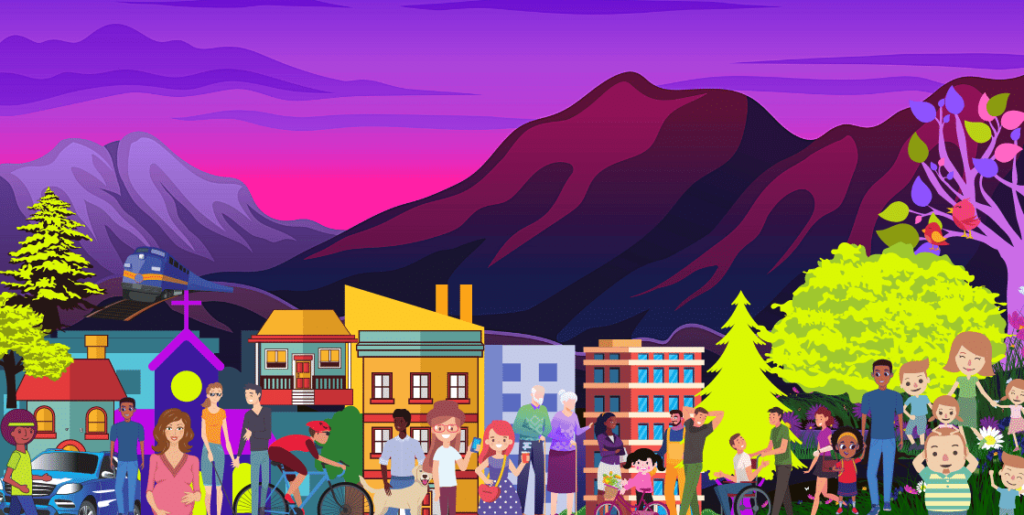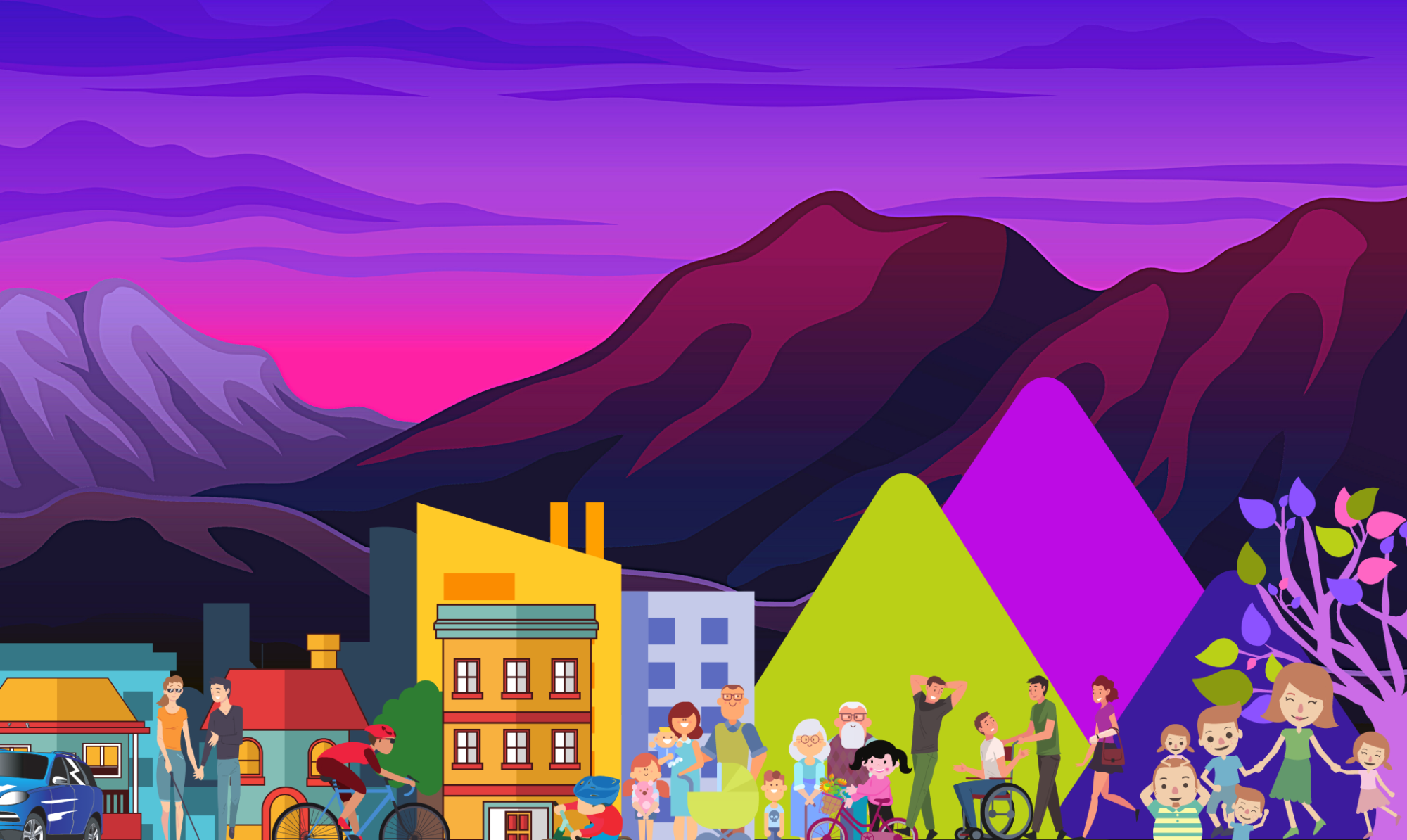Accessible Environment, Inclusive Society

Downloads
– Project Fact Sheet >> PDF DOCX
– Call for Contributions >> PDF DOCX
– Experience Submission Form >> PDF DOCX
Objectives
The project aims to help spread a culture of environmental accessibility. The idea of an accessible environment – a world in which no one, regardless of their physical or cognitive condition, encounter any more architectural or technological or social barriers that affect their mobility, limit their relationships, and prevent their full realization as persons and as citizens – can no longer be confined to utopia. Today, at the dawn of the third millennium, this dream must become a reality: this is a prerequisite for the realization of an inclusive society.
Today, fortunately, this awareness is growing. There is a great deal of ongoing initiatives all over the planet, thanks to the commitment of associations of people with disabilities, civil society organizations, national and international bodies, groups from the world of science, law, culture, sport, communication, politics. However, there is still a long way to go. There is still a lot to do. The contribution we wish to bring about is inspired by the culture of unity, which is the founding dimension of the Focolare Movement. We will draw on the many concrete experiences of life and social commitment carried out in this field by people who personally live situations of disability, or people who are in contact with disability at varied levels: witnessing how lived experience of the limits is able to enlighten the thought and inspire action to make communities evolve in a truly inclusive way.
Why this project
Encountering the experience of the limit
The experience of disability – a dimension of life that we may all encounter sooner or later when some limitations in our physical, sensory, cognitive, intellectual, relational skills will conflict with social barriers and expectations – poses a lot of challenges that run through the whole of society. The limit is a constitutive experience of human life: hence, disability can be looked at as an open book in which the truest themes of the “human project” can be read, along with the principles that should guide us in the construction of human coexistence. Therefore the limit is not a “niche” topic that concerns a small minority (think, for example, of the number of elderly people in a fragile situation), but it is an essential issue for social sustainability. A society which is inclusive of people with disabilities is a better society for all1.
A theme involving all facets of society
It is therefore not just a “social health issue”, as many still tend to think. Although it certainly generates demand for health and social care services, disability comes to terms with all facets of society, such as work, education, culture, sport, architecture, design, technology, mobility, transport, public services, communications, human rights, social justice and politics.
Disability: a situation where a limit meets barriers
In the collective imagination, the world of people with disabilities has often been regarded as a homogeneous “category”. In many languages, terms such as “healthy” or “normal” are often used as opposed to “handicapped” or “disabled”, and linguistic attempts have been made (“person with special needs”, “differently able”, etc.) to limit the stigma associated with such terms, without, however, moving out from considering disability as a characteristic of the person.
Today, we are increasingly understanding that disability is not an attribute of the person: it is a situation the person may experience when his or her physical or cognitive limits conflict with barriers. In fact, the World Health Organization speaks of disability as opposed to functioning2; the UN Convention on the Rights of Persons with Disabilities speaks of persons with disabilities3, thus highlighting that first of all comes the person as a whole, and disability only arises when he or she interacts with barriers4.
So many different worlds, within the wide world of disability
This new understanding has highlighted that the disability world is far from being homogeneous. Conversely, it is a galaxy of worlds, each involving different needs, services, and policies.
For example, we may think about the world of people with motor or sensory limitations who aim at self-determination, and put priority on themes such as autonomy, independent living, work, establishing their own family, mobility, communication, active participation in social and civic life.
There is the world of people with intellectual and relational limitations, where priorities may concern issues such as family management, protection against abuse, dignified life when the parents will be no longer alive, assets administration, supported paths of integration into school, work and community.
There is also the world of people with intensive care needs, such as people on end-of-life paths, people in vegetative or minimum-consciousness state, elderly people with dementia, where issues such as quality of life, dignity of care and welfare sustainability tend to prevail.
An accessible world, a more united world
So, what is a common thread that unites these three worlds, which are so distinct?
Probably, it is exactly what we have said above: the “dream” of an inclusive, accessible, enabling society, where every person can be the protagonist of his or her choices, live with full dignity on equal foot with all other citizens, and rely on sustainable assistance wherever necessary, without being forced to fight every day against environmental, cultural, political-economic and organizational barriers.
For those who believe in the idea of a united world, this cannot remain a dream. It is a push for action, creativity, and mobilization of intelligence to design concrete, tangible, measurable solutions. It is a reality to be built, on which humanity has already come a long way, where many experiences are already making history. Especially those who personally experience disability are bearer of a precious knowledge that deserves to be injected into society, helping it evolve towards a better world for everyone. “Dal limite il di più” – “from the limit, the something more”, motto of a local working group composed of people with disabilities and professionals who have worked on these issues in Italy – well expresses this concept: the lived experience of the limit turns on lights that help illuminate the whole society.
Project breakdown
Step 1: Learn
We wish to start from lived experiences. Thus, the first phase of the project involves the collection of experiences from various parts of the world, whose protagonists may be people with disabilities as well as people involved in disability at various levels. The experiences we are most interested in are those which have also impacted or are impacting on society in terms of “planting a seed of a united world” and marking a step of development towards a more inclusive community. The story of these experiences will be the theme of four international online seminars, open to public, which will take place in 2021 (dates to be defined shortly).
Step 2: Act
The second phase will include an international event – tentatively in 2022 – dedicated to elaborating and discussing these issues in depth and co-designing specific initiatives to be carried out in the third phase. The event will consist of various seminars either in presence or online, to be held simultaneously in various parts of the world.
Step 3: Share
The third phase will see the implementation of the initiatives planned in the previous phase, possibly included in the “Pathway 2021-22” of the Project for a United World.
References
- The concept of inclusiveness is often mentioned In the 17 Sustainable Development Goals (SDGs) of the United Nations 2030 Agenda, among the primary indicators of the quality and sustainability of the social fabric: for instance, it is quoted in SDG 11 (Sustainable Cities and Communities), SDG 10 (Reducing Inequalities), SDG 4 (Equal and Quality Education), SDG 8 (Decent Work and Economic Growth) and SDG 17 (Partnership for Objectives).
- See WHO’s International Classification of Health, Functioning and Disability (ICF) biopsychosocial model.
- Article 1 paragraph 2 of the UN Convention reads: “Persons with disabilities shall include those with long-term physical, mental, intellectual or sensory disabilities who, in interaction with various barriers, may prevent their full and effective participation in society on an equal basis with others.”
- A simple example: I may move about independently with my wheelchair on a road without barriers, but I get stuck in front of a staircase if this is the only way to go; that is, I can “function” perfectly in certain situations, and be “disabled” in others.
